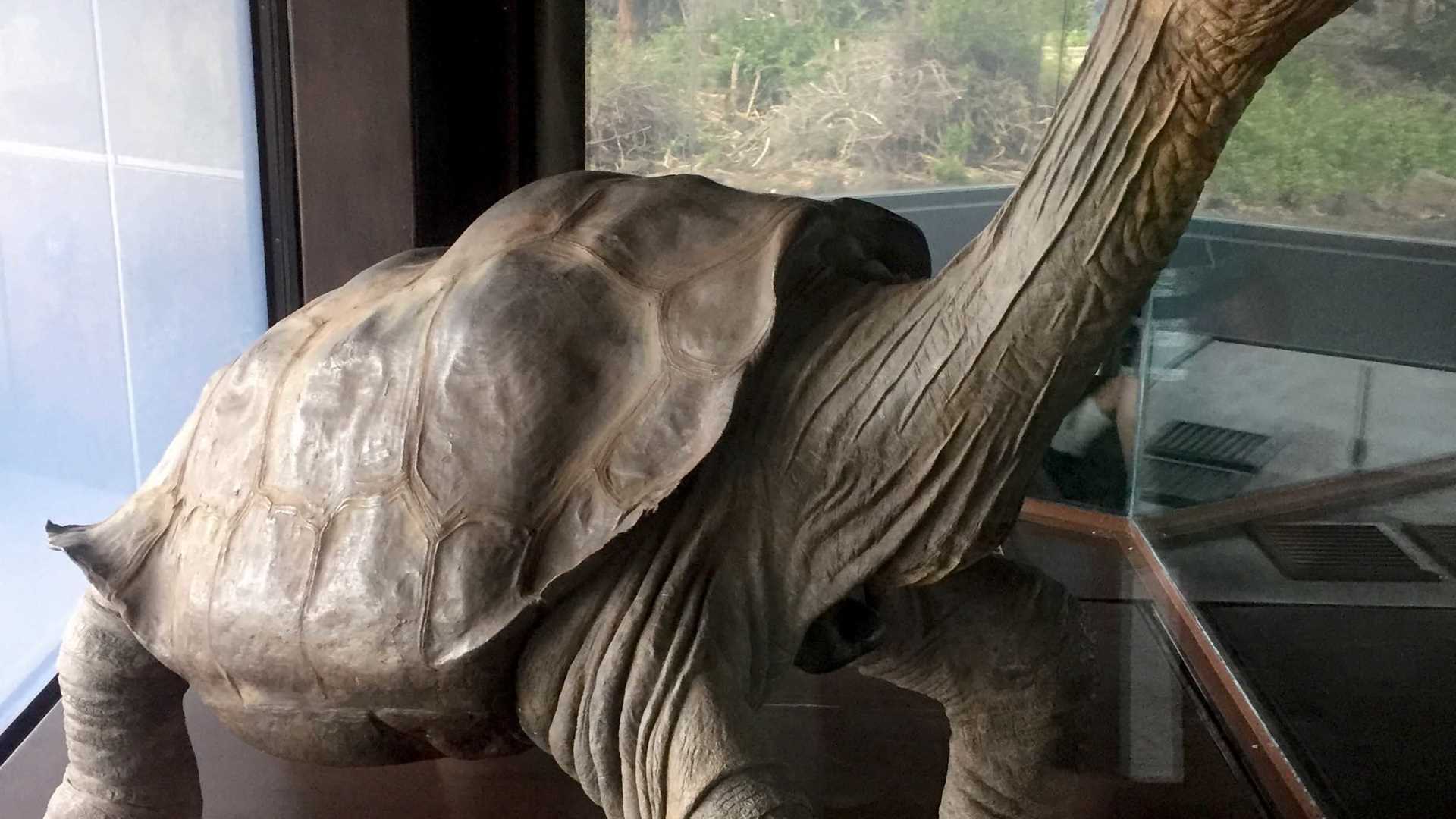Located at the center of the Galapagos, Santa Cruz is the second largest and the most populated island. Its Spanish name is after the Holy Cross, and its English name (“Indefatigable”) was given after a British vessel HMS Indefatigable. This island is a large dormant volcano whose last estimated eruption occurred around a million and a half years ago. Puerto Ayora, the capital of Santa Cruz, hosts the largest human population in the archipelago and the headquarters of Galapagos National Park and Charles Darwin Foundation.
After breakfast we landed at Puerto Ayora, heading to the Galapagos National Park’s breeding center. We visited the Espanola Island giant tortoise corral, and there, Diego, the most famous living tortoise in the Galapagos, delighted us with his tameness and curiosity. Diego has been the key to the most successful breeding program that recovered completely the devastated populations of tortoises in Espanola, which was down to only 14 individuals in 1960s, and nowadays is up to almost 3,000. There are many conservation projects like this one, not only with tortoises but also with land iguana. After visiting the tortoises, our guests had chance to visit El Trapiche, a farm located in the highlands, a perfect place to cultivate not only coffee, but also cacao and some different kind of fruits, such as bananas, pears, oranges, watermelons, papayas and others. Our guests had a chance to observe the complete process to produce moonshine (aguardiente) and roasted coffee, but the way this was processed more than 50 years ago, when there was not electricity in this area and farmers used donkeys to squeeze the sugar cane to obtain the juice. After visit El Trapiche Farm, we moved higher in the island, to our restaurant where we enjoyed a delicious food with a beautiful view of the island and the ocean.
After lunch we headed to El Chato, another farm where our guests had a chance to observe giant tortoises in their natural habitat. Along the trails, many giant tortoises fed on grass and ripe fruits, while in the small ponds of muddy water, other rested peacefully. Afterwards, we had a chance to cross an incredible lava tunnel, which inside was very wide like a real empty chamber but with another smaller lava tunnel inside. Walking inside the tunnel, we noticed how the tube became narrower at the end, making it possible to distinguish the second deck of the small lava tube inside, a unique formation created due to explosive eruptions a long time ago. We finally returned to Puerto Ayora, where local residents worked out playing ecuavolley (an Ecuadorian version of volleyball). At night, our guests were delighted with a traditional choreography and a local band, that played wonderful music with their unique instruments. It was impossible to avoid dancing!







